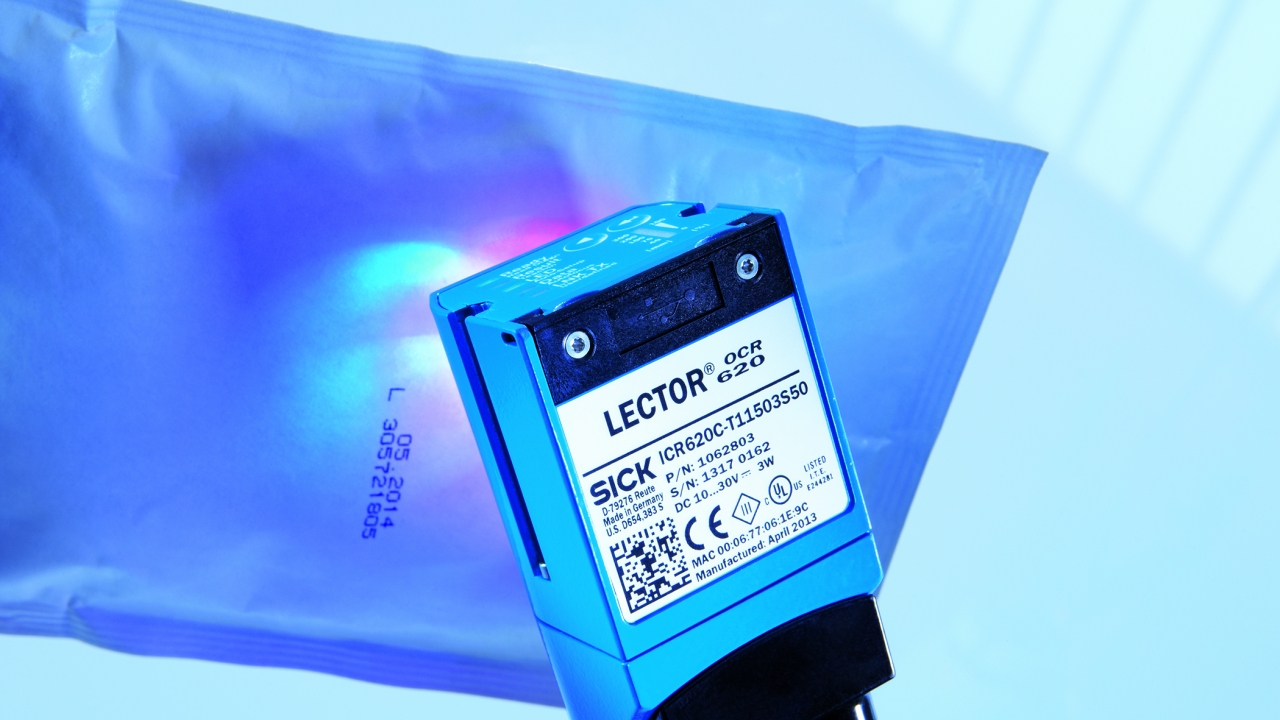Sick adds Lector 620 OCR
Sensor specialist Sick is launching an optical character recognition (OCR) version of its Lector 620 scanner for packaging applications, making combined alphanumeric character and barcode reading, quality checking and matching, faster, simpler and more reliable than was previously possible.

The Lector 620 OCR combines OCR, optical character verification, 2D and barcode reading in a single device. It permits plain text letters, symbols and numbers at distance between 30-300mm to be detected both while stationary and at speeds of up to 4m/s. A range of standard fonts are supported, as well as barcodes and data matrix codes, ensuring both legibility and placement for essential quality control. The device incorporates a microSD card for image storage and parameter back-up memory.
Sick said machine vision-based technology plays an important can role in ensuring pharmaceutical, food, cosmetics and FMCG products leave the factory with alphanumeric labeling information fully readable, and that matches the product’s barcode and is fully traceable.
The teach-in of fonts and commissioning is done at the scanner rather than remotely from a PC, and can be performed from the running production line. The integrated font training wizard provides intuitive teach-in and fonts can be cloned to other Lector 620 OCR scanners.
USB-based ethernet connection to a factory communications network allows for remote reading and data logging or, alternatively, is compatible with CAN bus or Profibus protocols. The device is also compatible with Sick’s proprietary IDpro protocols for integration into many industrial networks.
Neil Sandhu, application specialist for imaging and measurement at Sick, said: ‘Pharmaceutical, Food, FMCG and cosmetics packaging still needs human readable on-pack data, such as batch, lot numbers and best-before expiry dates. These numbers, letters, symbols and codes need to be verified, be of a readable quality and match the barcode to ensure the right data is associated with the right pack.
‘It’s the only cast-iron way for manufacturers to save punitive fines and comply with the requirements of retailers and the law.’
Stay up to date
Subscribe to the free Label News newsletter and receive the latest content every week. We'll never share your email address.

